MAY 2020 ENEWS
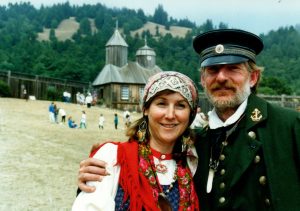 Dear friends of Salt Point and Fort Ross,
Dear friends of Salt Point and Fort Ross,
We are disappointed to announce that this year’s Fort Ross Festival, scheduled for July 25th, 2020, has been canceled. Because of Covid-19, Fort Ross State Historic Park is still closed to the public, and while there’s a good chance the park will be open to visitors in the next month or so, for the safety of our community large gatherings are not allowed.
This is the first time in many decades - five decades, to be exact - that we haven’t been able to throw our summer festival, and we are so sad to not be holding this annual milestone. This event was launched in the mid 1970s, although in the early years different communities held separate events at the park -- there was a Russian History day, a Ranch Day, and an Indian Day. At some point in the late 1980s these groups joined forces and the summer festival began to grow. (These photos from FRC archives are all from an earlier era.) The event’s name has also changed with the times. It started out as Living History Day, evolved into Cultural Heritage Day, and today it’s known as Fort Ross Festival, a relaxed and joyful event which loosely embraces the history of Metini / Fort Ross. It continues to evolve, and we are grateful to now have the Alaska Native community represented at Fort Ross and participating in Fort Ross Festival.
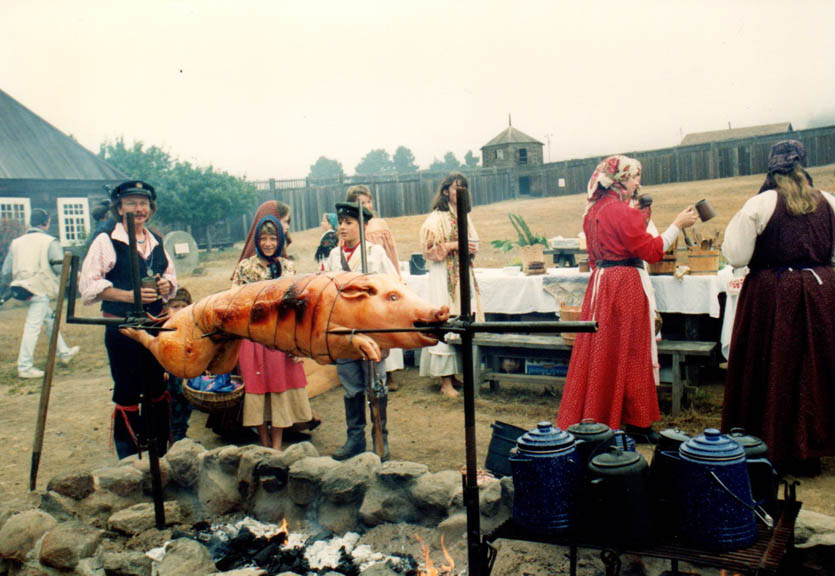
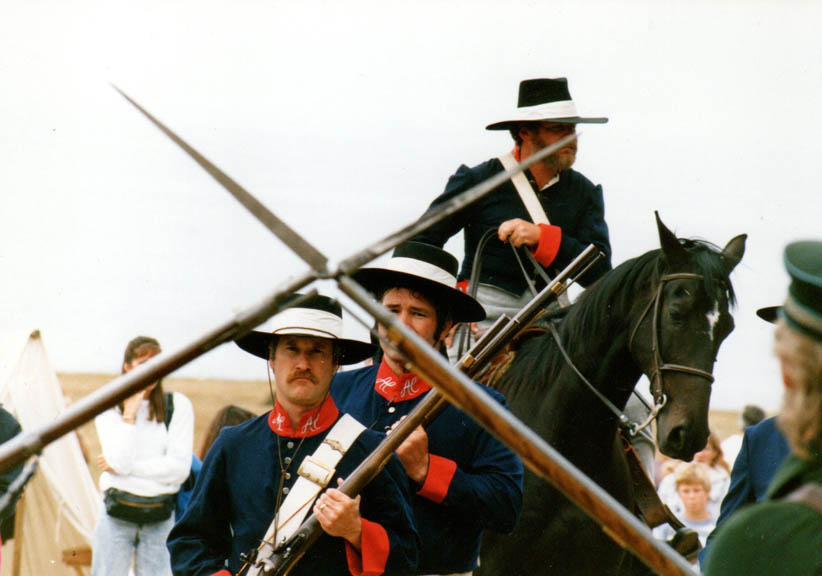
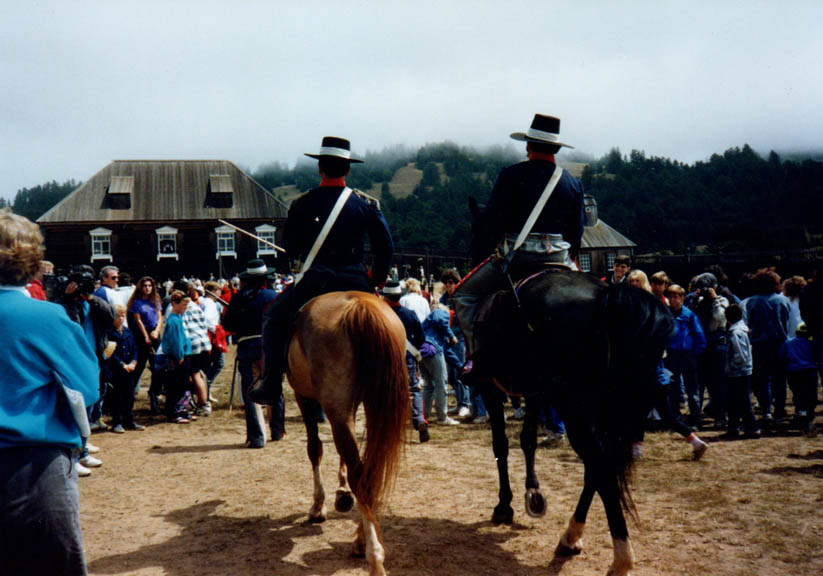
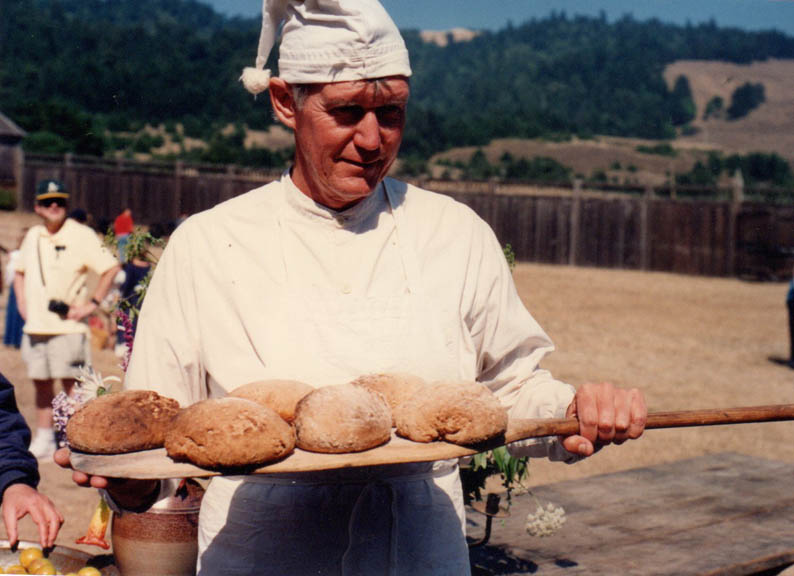
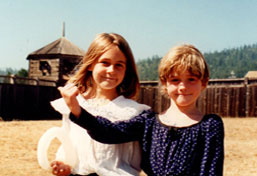
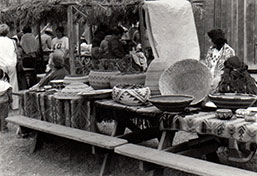
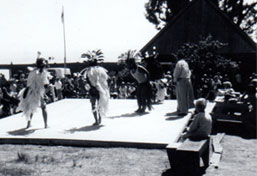
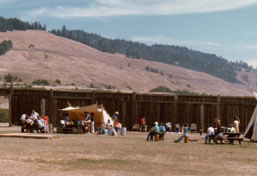
Our summer festival is special because we are blessed with hundreds of enthusiastic volunteers who showcase their historic crafts, organize the militia, re-enact vignettes, and perform live music and dance, all in one of the world’s most inspiring settings. It’s a lot of work for our small staff to organize an event that draws well over 3,500 people, but once the day gets rolling we all have a smile on our faces.
Fort Ross Festival has always been more laid back and admittedly less historically accurate than events on that other coast. It’s all about place - a truly California-inspired event, equal parts community celebration, song & storytelling, and the perfect picnic scene (the more so since the introduction of the Fort Ross Beer Garden!)
We normally welcome guests from around the world at the festival. For at least the last ten years we’ve witnessed many more Russians and Russian Americans, with the dominant language spoken being Russian. The US Embassy even runs a contest across Russia where the winning high school team gets a free trip to attend this event - and we are so disappointed we can’t welcome these aspiring young Russian students to Fort Ross this summer.
No matter what destiny brings, Fort Ross Conservancy remains committed to fostering intercultural bonds that have united numerous generations of our ancestors on this sacred Kashia land for over two centuries. We are optimistic that we can once again plan for our big summer party, so please do save the date for next year: July 31st, 2021.
Sarah Sweedler
Fort Ross Conservancy CEO
Buy a Gift Certificate from the FRC Bookshop
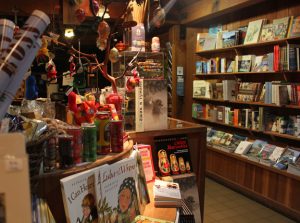
Do you enjoy reading our Newsletter? Become a member today , or call us to purchase a bookshop voucher which will help keep Fort Ross Conservancy going during the park closures.
There is a wide variety of excellent goodies in the Bookshop. For the younger naturalists there are identification playing cards and laminated fold-outs for every type of animal, flower, tree, marine mammal, bird, fish, and more. Fun and informative, engaging picture books focus on natural history and environmental issues in story form. Books on topics as wide-ranging as local, California, and Native American history; Russian America and Fort Ross history; geology, mushrooms, foraging and food, and botanical cocktails! But wait, there’s more! Local authors’ works are our favorites and we love to give them the spotlight. And when the fog rolls in, the feet need socks, and they are here: fun socks, warm socks, low and high top socks. More fun: nesting dolls, jewelry, art and photo note cards, vintage design tea towels, exquisite handmade ornaments for every season, and small to large stuffed animals. Almost forgot: unique design Tees and Hoodies, handmade hats, postcards of the local beauty, and delicious snack foods and drinks.
Email Sarjan at sarjanh@fortross.org or call at 707/847-3437.
Memorial Day Remembrance
Honor the fallen by fighting Covid19
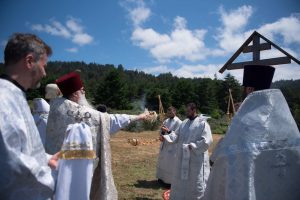
We celebrated the Memorial Day in complete solitude at Fort Ross. Commemorations of all the brave soldiers who perished in battle to preserve and enhance our way of life take on a special meaning this year, for this year millions of Americans stand united in tackling the coronavirus pandemic which too has led to unprecedented levels of fatalities across the US.
It is disappointing to see how our common enemy - Covid19 - is forcing us to temporarily break from the wonderful Memorial Day custom we have at Fort Ross. It has been a long-standing tradition for His Eminence Kyrill, Archbishop of San Francisco and Western America, to lead the annual ROCOR diocesan Memorial Day pilgrimage to Fort Ross. This event attracts hundreds of Orthodox faithful from across California to the spiritual abode of their forebears. As the doors of the historic 19th century wooden chapel remain shut, let us remember that prayers for the reposed soldiers, founders, and laborers of Fort Ross can still be offered at home. Fort Ross Conservancy’s website also has plenty of material to help cultivate rich consciousness of the Russian-American heritage.
“It has always been a joyous day with the concelebration of the Divine Liturgy led by our hieararchs and surrounded by many the faithful from throughout the Western American Diocese,” ROCOR said in a press release. “It is with a heavy heart that we acknowledge the cancellation of our the annual diocesan pilgrimage to Fort Ross on Memorial Day.”
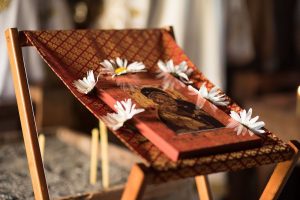
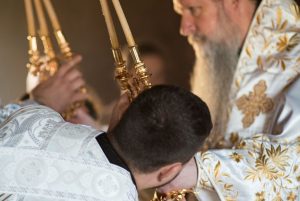
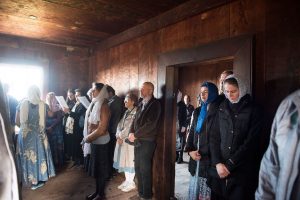
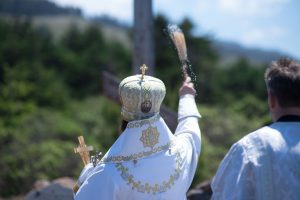
Fort Ross State Historic Park remains temporarily closed in an effort to protect public health and safety amid the ongoing Covid19 pandemic, but we hope to welcome Orthodox services at our chapel as soon as it is safe to do so. We look forward to once again hearing the glorious voices of the choir at the Divine Liturgy, taking part in a procession to the Fort Ross cemetery and enjoying traditional Russian cuisine. But for now, please observe the state mandated health regulations, enjoy nature responsibly, and contribute your part in fighting the spread of the deadly disease.
Photos: © ROCOR / Tatiana Tverdokhelbova
-- Igor Polishchuk, Director of External Relations and Community Partnerships
Squab For Supper
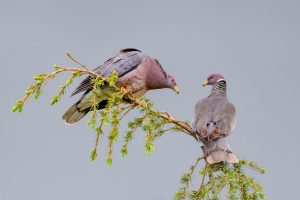
Has sheltering in place got your taste buds down? While dining out has ranged from limited to non-existent, people have been looking for ways to spice things up in the kitchen by experimenting with new ingredients and recipes. In honor of these stay-at-home, creative endeavors, how about a little mealtime inspiration from a bird that can be found while you're out wandering at Fort Ross? If eating squab for supper sounds like a mere flight of fancy, let me tell you about pigeons of Fort Ross’ past and present.
Throughout the world there are hundreds of pigeon species, and while many people regard these birds as invasive pests or “rats with wings,” there is one native pigeon species in the western United States and it makes its home at Fort Ross: the band-tailed pigeon (Patagioenas fasciata).
Band-tails are a little larger than the invasive rock dove or “city pigeon” that was introduced to North America by European settlers in the 1600s. The next time you’re at Fort Ross State Historic Park see if you can spot the native species. They are a soft bluish-gray on top and purplish-gray on the bottom. Adults have a distinct white crescent on the back of their necks, perched on top of a patch of iridescent green and bronze feathers. Their beaks and feet are a bright yellow and they have a dark band across their long, wide tail--hence their common name. You can also listen out for the pleasant song of the band-tail which sounds very similar to a hooting owl’s “whoo-hoo.”
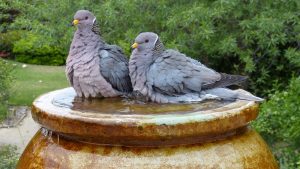 Early reports suggest that band-tailed pigeon populations once numbered in the millions, making them an historically abundant and important food source for California native peoples. In their book California Indians and Their Environment, Kent G. Lightfoot and Otis Parrish describe a variety of techniques that were used to hunt these prolific birds. “The Band-tailed Pigeon can be hunted with bow and arrow while it feeds, but it can also be snared or captured in a large openwork basket. A hunter hidden behind a blind dropped the basket on birds as they drank from a spring. The Costanoans used bolas , but they also hurled stones from slings at flying flocks.” (Kent Lightfoot and Otis Parrish, 2009, pg 243). Interestingly, among the Kashia pomo (the native people that lived here long before Fort Ross was Fort Ross) only the elders ate band-tailed pigeons because eating their meat was thought to cause deafness.
Early reports suggest that band-tailed pigeon populations once numbered in the millions, making them an historically abundant and important food source for California native peoples. In their book California Indians and Their Environment, Kent G. Lightfoot and Otis Parrish describe a variety of techniques that were used to hunt these prolific birds. “The Band-tailed Pigeon can be hunted with bow and arrow while it feeds, but it can also be snared or captured in a large openwork basket. A hunter hidden behind a blind dropped the basket on birds as they drank from a spring. The Costanoans used bolas , but they also hurled stones from slings at flying flocks.” (Kent Lightfoot and Otis Parrish, 2009, pg 243). Interestingly, among the Kashia pomo (the native people that lived here long before Fort Ross was Fort Ross) only the elders ate band-tailed pigeons because eating their meat was thought to cause deafness.
It wasn’t just California native peoples that had a taste for pigeon. Europeans also enjoyed squab and brought their great fondness for the meat with them to the new world. During the American Ranch period of the 1800s, an early owner of Fort Ross, the German-born Wilhelm (or William) Otto Benitz managed a few farming enterprises that supplied a number of goods, including the popular pigeons, to Sonoma, Sacramento and San Francisco markets.
Over time band-tailed pigeons became a popular target--not just overhunted for their meat, but for sport and by farmers who were fed up with the birds going after their crops. By the early 1900s band-tailed pigeon populations had taken a severe hit and needed protection if they were not to suffer the same fate as their close relative, the passenger pigeon who tragically went extinct in 1914. Fortunately, the band-tails became federally protected under the Migratory Bird Act enacted in 1916. With their protected status, band-tail populations rebounded, but unfortunately newer challenges such as habitat loss and disease began to negatively impact their numbers. According to the California Department of Fish and Wildlife our “treasured” native pigeon has experienced long-term population declines at 2% per year since 1968. Today California is one of seven states that allows the hunting of band-tailed pigeons, but there are heavy restrictions in place to help in their conservation.
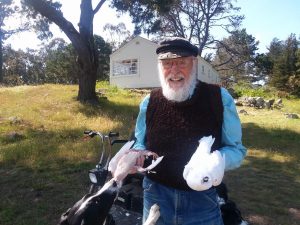
For these reasons (and perhaps some others) you may not want to pick up wild pigeon hunting as a new favorite pastime, but you can consider a domesticated pigeon option for your plate. Within the greater Fort Ross community, there is a well-known and beloved ranch family that has been raising pigeons on and off since the 1930s. The Rudy family lives along the Pacific Coast Highway between Fort Ross and Salt Point State Parks at the historic Stillwater Cove Ranch . The ranch is headed by Jerry Rudy who single-handedly runs the family’s pigeon operation which keeps the Rudys well supplied with tasty pigeon meat year round. During a responsibly conducted, socially distanced and masked interview on his ranch, Mr. Rudy introduced me to his free-ranging flock of pigeons: a beautiful breed called white kings. The white kings look more like doves of peace than our native gray pigeons and according to Rudy, his father started raising them solely for their good looks. Jerry Rudy later picked up the practice, but unlike his father he saw the birds as a way to feed his family. He started off with just three pairs of white kings that he bought from Western Farm, and from there his self-sufficient flock grew to around 100 or so strong.
Stillwater Cove Ranch provides the perfect habitat for these birds to thrive. Even though there are a few natural predators to contend with (Cooper’s hawks, peregrine falcons, and the clever rascals known as common ravens) the ranch has wide-open spaces that provide more safety than nearby, heavily forested homesteads. The ranch is also within a few wingbeats of the Pacific Coast, and the birds enjoy flying to the beach to help themselves to salt on the rocks. Along with their regular feed, Mr. Rudy tosses out scratch for his pigeons twice a day. In the process he has become quite popular among the native band-tails who come for the twice-daily treat. Every Sunday, Jerry climbs the tall ladder to the pigeon coop to check on the birds and harvest all the squabs (the plump, young pigeons that are not old enough to fly). At this stage the pigeons are delicious, tender “butterballs.” The spring months are the most productive, and during this time the Rudy’s enjoy sharing their abundance with friends. They have also made their pigeons available for sale at the local farmer’s market held on Sundays at Fort Ross School.
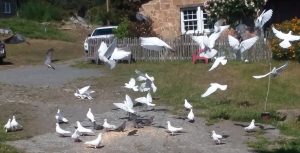
If you’re looking to branch out your dinner menu, don’t be pigeonholed by beef when you can try another dark meat. If you’re interested in squab for supper, perhaps there is a pigeon farmer in your area making these delicacies available. If you prefer to enjoy your pigeon at the park rather than on your plate, we hope that the next time you’re safely exploring the wildlife at Fort Ross State Historic Park (reopening pending) you’ll keep an eye and an ear out for our treasured native band-tailed pigeon (whoo-hoo)!
A Smidgeon of Pigeon Fun Facts - The history of pigeons around the world is fascinating, richly varied and well worth exploring. Here are a handful of fun facts to whet your appetite:
- Rock pigeons might have been the first domesticated bird; you can see them in artwork dating back to 4500 BCE.
- Charles Darwin was an enthusiastic pigeon breeder and these birds were a great source of inspiration for his contributions to the science of evolution.
- Humans have made use of pigeons’ incredible navigational skills for thousands of years. Ancient peoples would set caged pigeons free and follow them to find nearby land.
- Pigeons make for amazing long-distance messengers. During World War I and II they were used to deliver critical messages that helped save thousands of lives.
- Before her passing Essie Parrish, the well respected Kashia elder and medicine woman, recorded words in her language. Use This Link To Hear How To Say "Pigeon" In Kashia.
- At one time there were as many as five billion passenger pigeons living in North America. It is believed that this North American native once made up more than a quarter of all the birds living in the US before it became extinct.
References and Recommendations:
- Audobon on our misguided hatred of pigeons
- California Dept of Fish and Wildlife: Band-tailed pigeon hunting and bag limits
- Check out Hank Shaw's pigeon recipes
- The Conversation: How do Homing Pigeons Navigate?
- Cornell Lab of Ornithology: Band-tailed pigeon profile
- Discover Magazine: Reconsidering the Pigeon
California Indians and Their Environment by Kent G. Lightfoot and Otis Parrish
The Ranch Era by F. Kaye Tomlin
Photo credits: Becky Matsubara (CC BY (https://creativecommons.org/licenses/by/2.0), Mike’s Birds (CC BY-SA (https://creativecommons.org/licenses/by-sa/2.0), and Charon Vilnai
--Charon Vilnai, Programs Instructor, Sea Lion Survey Project Lead, and Call House Museum Lead